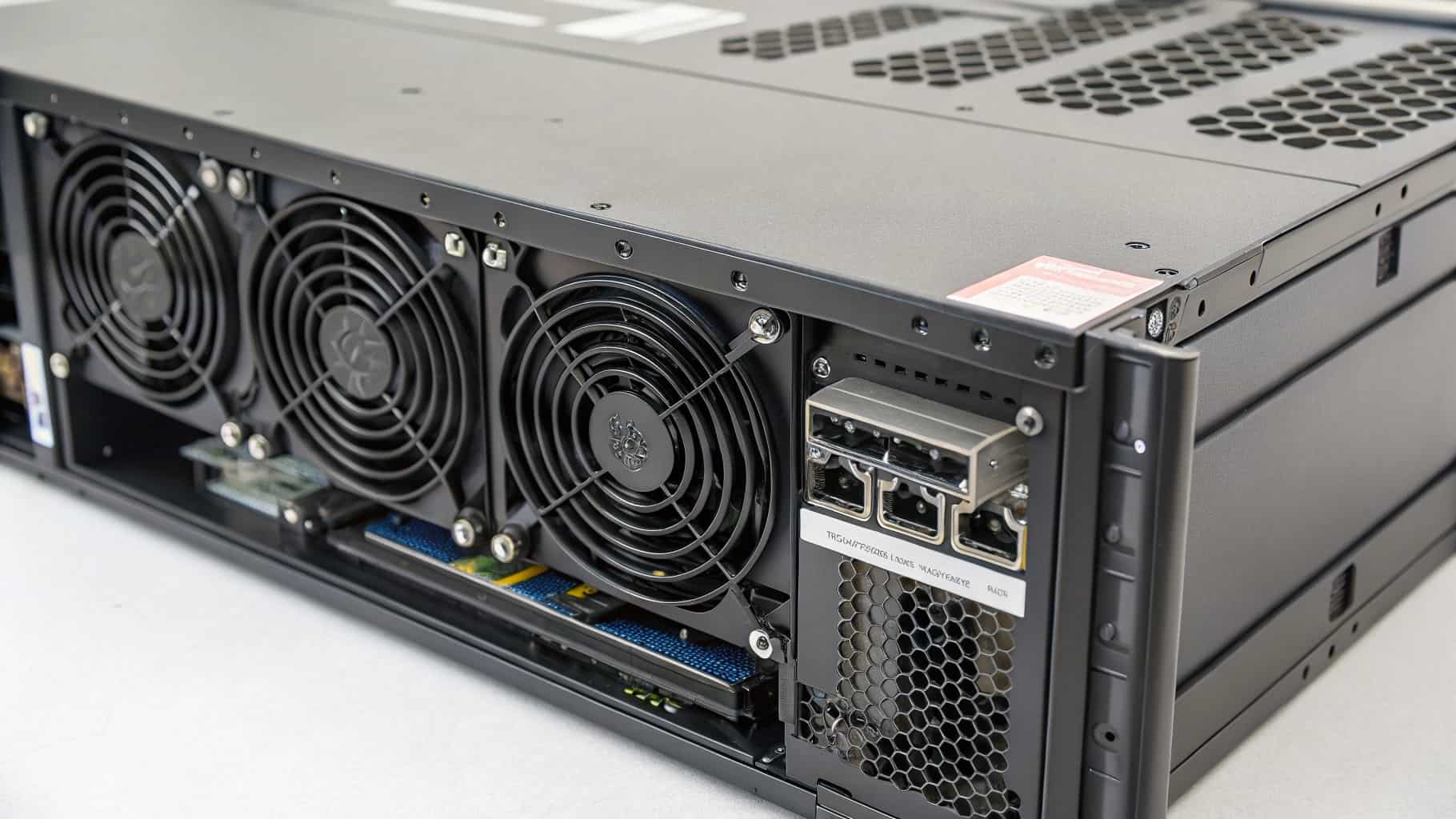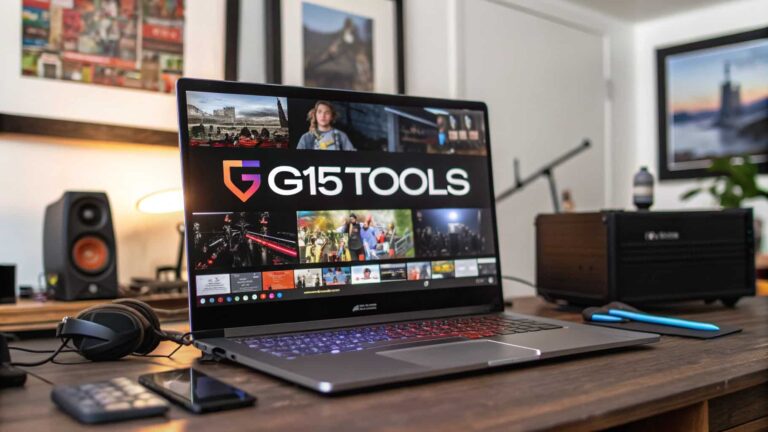IBM 9306 Model 900 23L2551 Cooling – The Heart Of Your Server’s Efficiency!
The IBM 9306 Model 900 23L2551 Cooling system is an integral part of efficient server management and infrastructure, offering a range of features specifically designed to meet the demands of modern enterprise-level server racks. When you’re running high-performance systems in a data center, one of the critical factors in ensuring smooth operations is effective cooling.
Overheating can cause irreparable damage to your hardware, resulting in downtime and significant repair costs. This article explores the IBM 9306 Model 900 23L2551 Cooling system, highlighting its design, key features, and why it’s considered a robust solution for optimizing server health.
What Is The IBM 9306 Model 900?
The IBM 9306 Model 900 is a durable server rack enclosure built for IBM’s eServer xSeries and other enterprise systems. It’s known for its strong metal frame and reliable structure, making it ideal for housing multiple servers and network devices.
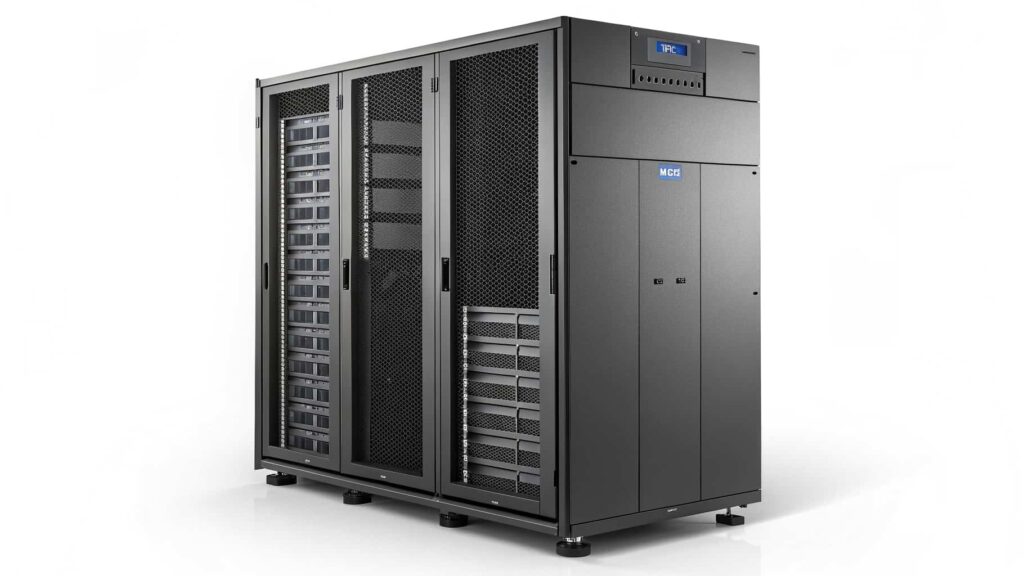
One of its standout features is the cooling system, which helps maintain stable performance even in dense setups. As server power demands increased, IBM improved its design by adding better airflow options, such as a perforated front door and upgraded cooling fans, to keep temperatures under control.
What Does The IBM 9306 Model 900 23L2551 Cooling System Include?
The IBM 9306 Model 900 23L2551 Cooling setup refers to the combination of fan assemblies, ventilation design, and optional airflow upgrades that manage internal temperature. The part number 23L2551 is believed to represent a fan-related component or assembly used within this rack series.
Key Features of the Cooling System
- Noise and Power Efficiency Balance: The fans were designed to maintain airflow efficiency while minimizing operational noise, a common challenge in early enterprise enclosures.
- Rear-Mounted Cooling Fans: The Model 900 integrates a rear-mounted fan assembly designed to pull hot air out from the back of the rack. This rear-exhaust system ensures consistent heat removal from multiple server levels.
- Front-to-Back Airflow Design: Air enters from the front of the enclosure (through either glass or perforated doors) and exits through the fans at the back. This linear airflow pattern minimizes hotspots.
- Upgrade Options for Better Ventilation: IBM later offered a perforated steel front door (part number 06P6010) to replace the original glass one, significantly improving intake airflow.
- Fan Assembly Accessibility: The cooling fans are mounted using eight securing nuts and connected via a standard power plug, allowing for straightforward maintenance or replacement.
Why Cooling Is Critical for the IBM 9306 Model 900?
In legacy IT environments, the effectiveness of cooling systems can determine both equipment longevity and performance stability. The IBM 9306 Model 900 was engineered during a time when server processors were becoming increasingly power-hungry, which meant that proper ventilation was no longer optional—it was a necessity.
Preventing Overheating in High-Density Configurations:
When the Model 900 was released, it often hosted multiple rack-mounted servers stacked closely together. Without efficient cooling, temperatures could rise rapidly, leading to thermal throttling, shutdowns, or even permanent damage.
Maintaining Consistent Air Pressure and Flow:
The rack’s internal cooling system ensures that airflow moves evenly from front to back. This balance prevents hot air recirculation—a common problem in tightly packed enclosures.
Optimizing Performance for Legacy Systems:
Older servers like the IBM xSeries 330 require stable cooling to maintain processor performance and prevent system errors. Upgraded ventilation solutions like the perforated front door became essential for such systems.
Extending the Lifespan of Hardware Components:
Proper cooling not only safeguards the processors but also protects other internal components such as power supplies, memory modules, and storage drives. Overheating can accelerate component wear, reduce electrical efficiency, and lead to premature hardware failure. Consistent airflow helps preserve the longevity of every unit installed in the rack.
Reducing Energy Consumption and Operational Costs:
When the cooling system works efficiently, fans and air conditioners do not need to operate at maximum power all the time. This balance reduces overall energy consumption, decreases operational noise, and lowers data center electricity costs—an important advantage for facilities still running legacy equipment like the IBM 9306 Model 900.
How Did The IBM 9306 Model 900 Evolve From A Glass To A Perforated Front Door?
The IBM 9306 Model 900 initially featured a glass front door, mainly for aesthetics and visibility. However, as server demands increased, this design caused major airflow issues, trapping heat inside the rack. Over time, IBM realized that effective cooling was more important than appearance.
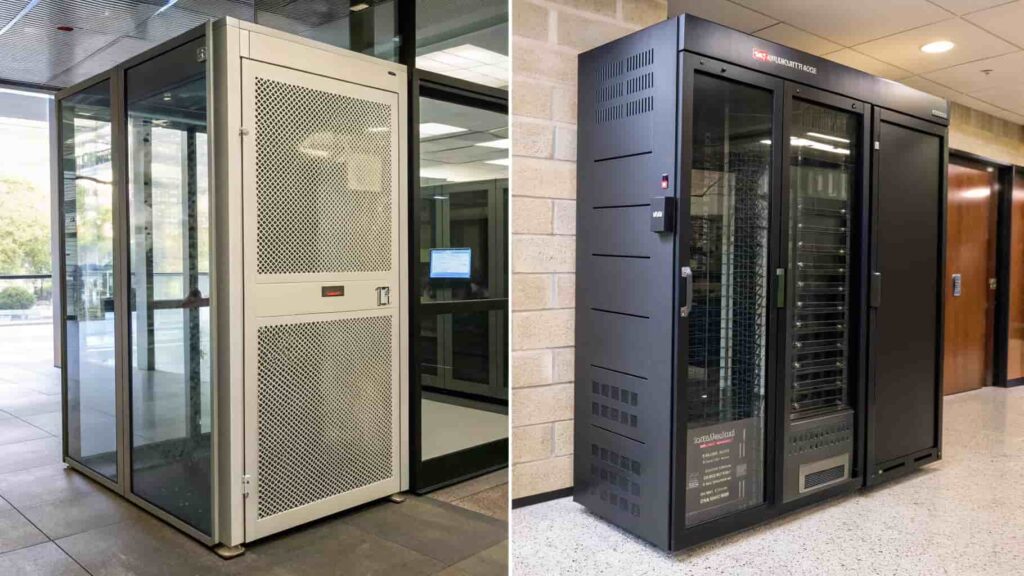
They replaced the glass door with a perforated steel version that allowed cool air to flow freely while releasing hot air efficiently. This upgrade not only reduced internal temperatures but also enhanced the reliability and performance of the servers housed inside.
How Can You Replace the IBM 9306 Model 900 23L2551 Cooling Fan?
Replacing or servicing the cooling fan assembly in the IBM 9306 Model 900 is a relatively straightforward process. IBM’s original manuals outlined clear procedures to ensure safety and efficiency.
- Power Off All Equipment: Always shut down and disconnect all power sources to prevent electrical hazards.
- Open the Rear Door: Access the back of the enclosure to reach the fan assembly.
- Disconnect the Fan Power Plug: Unplug the cooling fan connector to isolate it from the power source.
- Remove the Mounting Nuts: Use a 5/16-inch wrench to remove the eight nuts securing the fan unit.
- Extract the Cooling Fan Assembly: Carefully slide out the entire fan assembly without damaging the rear panel or wiring.
- Install the Replacement Unit: Position the new fan assembly, secure it with the same hardware, and reconnect the power plug.
- Test the Airflow: After powering on the rack, verify that the fan spins correctly and airflow remains consistent.
Where Can You Find Replacement Parts for IBM 9306 Model 900 23L2551 Cooling?
Finding new or OEM parts for legacy IBM systems can be challenging, as many models are no longer in production. However, users can still locate refurbished or used components through specialized vendors and online marketplaces.
Reliable Sources to Check:
- Refurbished Hardware Sellers: Companies specializing in legacy IT parts often carry used or reconditioned IBM cooling fans and enclosures.
- Online Marketplaces: Platforms like eBay, DiscTech, and ServerMonkey may list compatible parts.
- IBM Official Support: While IBM may no longer supply the parts directly, their documentation archives can confirm part compatibility and specifications.
- Enterprise Recyclers: Some data centers repurpose older hardware, offering used fans or enclosure doors at low cost.
What Are The Common Cooling Issues And How Can You Fix Them?
As systems age, the cooling performance of the IBM 9306 Model 900 may degrade. Understanding the root causes helps extend the life of the rack and its components.
Fan Noise or Failure:
- Cause: Dust buildup, bearing wear, or power supply issues.
- Solution: Clean or replace the fan assembly; ensure power connectors are secure.
Excessive Internal Heat:
- Cause: Blocked airflow, glass door restriction, or fan malfunction.
- Solution: Replace with the perforated front door; verify fans are operational.
Uneven Air Distribution:
- Cause: Misalignment of rack equipment or obstructions near intake/exhaust vents.
- Solution: Maintain front-to-back airflow alignment and remove cable blockages.
Power Supply Overload:
- Cause: Older racks often share power circuits between fans and servers.
- Solution: Separate cooling power sources or install a power distribution unit (PDU) for load balance.
Temperature Sensor Inaccuracy:
- Cause: Old or faulty sensors give wrong temperature readings.
- Solution: Calibrate or replace sensors regularly to maintain accurate cooling control.
How Can You Maintain the IBM 9306 Model 900 23L2551 Cooling System Safely?
Proper maintenance is crucial for prolonging the life and reliability of the IBM 9306 Model 900 23L2551 Cooling system.
- Clean Air Filters Regularly: Dust buildup can severely reduce airflow efficiency.
- Inspect Power Connectors: Loose plugs can cause intermittent fan failures.
- Monitor Rack Temperature: Use thermal sensors or smart PDUs for real-time monitoring.
- Avoid Overcrowding Equipment: Ensure there is space between servers for unobstructed airflow.
- Replace Aging Fans Promptly: Over time, fan bearings and motors wear out—replace them proactively.
Why Does the IBM 9306 Model 900 Remain Relevant Today?
Despite being a legacy enclosure, the IBM 9306 Model 900 remains in use today in labs, testing facilities, and smaller server rooms due to its sturdy design and modular structure. Many IT administrators appreciate its ease of maintenance, compatibility with multiple server generations, and upgrade flexibility through improved cooling mechanisms.
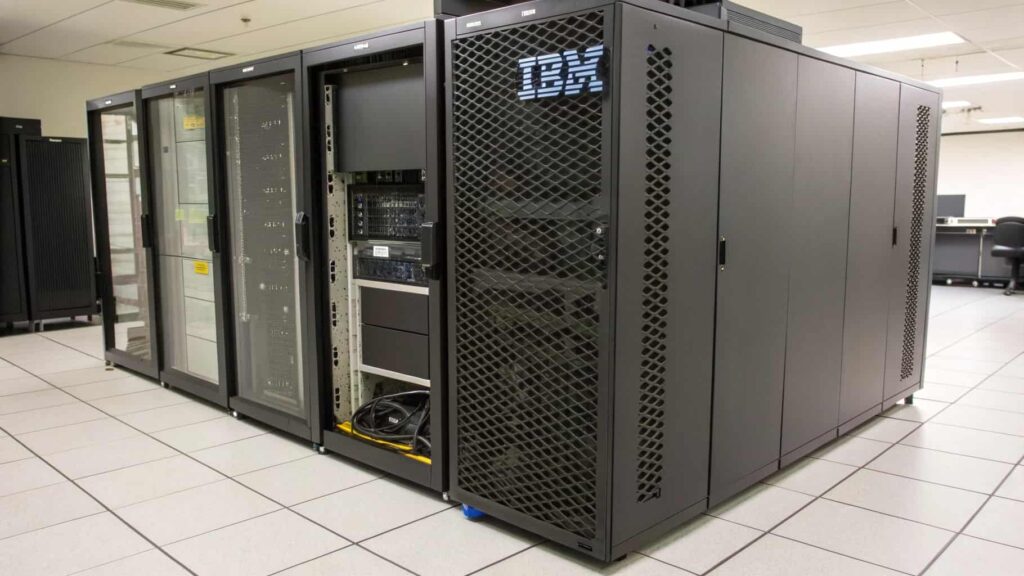
The cooling upgrades and replacement options—like the 23L2551 fan assembly and perforated steel front door—demonstrate how thoughtful engineering can extend the lifespan of enterprise hardware far beyond its original release period.
Can The IBM 9306 Model 900 Be Retrofitted With Modern Cooling Solutions?
Although the IBM 9306 Model 900 23L2551 Cooling system was effective for its time, modern data centers often retrofit these racks to support advanced cooling technologies.
- Active Airflow Management: Installing intelligent fans with temperature sensors can automatically adjust speed based on thermal demand.
- Cold Aisle / Hot Aisle Configuration: Positioning the rack within a cold aisle containment system improves cooling efficiency by separating intake and exhaust airflow zones.
- Hybrid Cooling Systems: Some technicians integrate liquid-assisted cooling units or rear-door heat exchangers to modernize legacy racks for high-power servers.
- Fan Speed Controllers: Adding variable fan controllers can fine-tune airflow to specific hardware configurations while minimizing power consumption.
What Is the Final Verdict on IBM 9306 Model 900 23L2551 Cooling?
The IBM 9306 Model 900 23L2551 Cooling system represents a cornerstone in legacy server rack design, where mechanical reliability met evolving thermal challenges. Understanding its airflow patterns, maintenance procedures, and upgrade possibilities ensures continued stability for any environment still operating these classic IBM enclosures.
Whether maintaining an archive data system or restoring vintage IBM hardware, ensuring proper cooling through compatible fan assemblies and upgraded doors is key to preserving both performance and longevity.
IBM 9306 Model 900 vs. Model 910 – Which Cooling System Works Best?
While the 9306 Model 900 offers reliable passive cooling, IBM introduced the Model 910 with enhanced airflow features.
| Feature | IBM 9306 Model 900 (23L2551 Cooling) | IBM 9306 Model 910 |
|---|---|---|
| Front Door | Glass (optional perforated upgrade) | Perforated / vented by default |
| Airflow Design | Balanced, front-to-back using rear fan assembly | Optimized for high airflow with better venting all around |
| Best Use Case | Moderate server density, equipment protection, older systems | High-density, heat-intensive environments |
| Cooling Efficiency | Good with upgrades (e.g. perforated door) | Higher native cooling due to design |
| Flexibility for Retrofitting | More adaptable due to optional upgrades | Less need to retrofit because airflow is already maximized |
| Noise & Power Trade-Off | Moderate | Tends to perform stronger but may incur more noise or power draw in heavy use |
If your environment has higher cooling requirements, the Model 910 may be a better choice. But if security and dust control matter most, the Model 900 (with possible modifications) still delivers excellent value.
The Future of Server Rack Cooling – What’s Next!
Cooling strategies are rapidly evolving. While the IBM 9306 Model 900 23L2551 cooling design remains dependable, IT leaders must anticipate future needs:
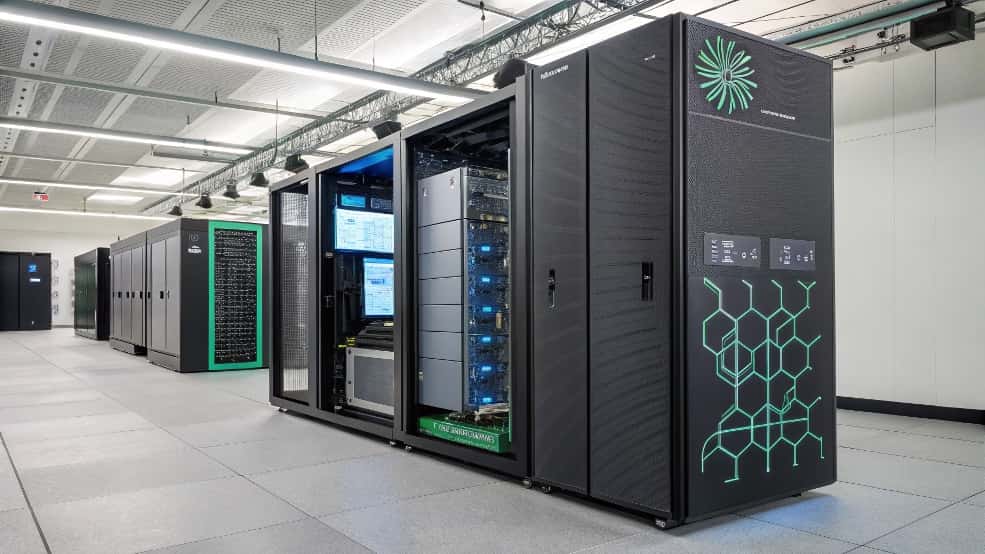
- Liquid Cooling: For workloads like AI/ML that demand high compute power.
- Immersion Cooling: Submerging hardware in dielectric fluid for extreme efficiency.
- AI-Driven Cooling Systems: Machine learning predicts workloads and adjusts cooling dynamically.
- Sustainability Focus: Green cooling methods to reduce carbon footprint and power consumption.
By combining the IBM 9306’s proven structure with emerging cooling technologies, organizations can future-proof their data centers.
FAQs:
Can the IBM 9306 Model 900 cooling system handle high-density server setups?
While the system can manage typical server loads, high-density setups may require additional cooling measures. Adding perforated doors or installing rack-mounted fans can enhance the cooling system’s effectiveness. Always consider the environmental factors to support high-density servers.
What temperature range does the IBM 9306 Model 900 23L2551 cooling system support?
The cooling system is designed to operate efficiently within 10°C to 35°C at sea level. For higher altitudes, the temperature range is slightly reduced to 10°C to 32°C. Maintaining these optimal ranges ensures the servers run smoothly without risk of overheating.
How often should I clean the IBM 9306 Model 900 cooling system?
It’s recommended to clean the IBM 9306 Model 900 rack and its components every 1 to 3 months, depending on the dust levels in your server room. Regular cleaning ensures optimal airflow and prevents overheating caused by dust buildup on vents and servers.
Does the IBM 9306 Model 900 support hot/cold aisle containment?
Yes, the IBM 9306 Model 900 works well with hot/cold aisle containment strategies. By keeping hot and cold air separated, this method optimizes cooling efficiency and prevents the mixing of hot and cold air, leading to better temperature regulation.
Is the IBM 9306 Model 900 cooling system energy-efficient?
Yes, the IBM 9306 Model 900 cooling system is designed to be energy-efficient, utilizing passive airflow. By relying on natural convection rather than energy-intensive fans or HVAC systems, it helps reduce the overall energy consumption in the data center.
Conclusion:
The IBM 9306 Model 900 23L2551 cooling system strikes a balance between security and airflow management. Its passive flow-thru design, combined with optional upgrades, ensures that enterprise workloads run safely and efficiently.
While newer models like the IBM 9306 Model 910 provide enhanced airflow, the 900 remains a versatile and cost-effective solution, especially when maintained properly. For IT managers, understanding and optimizing the 23L2551 cooling system is essential to safeguarding critical infrastructure.
Also Read:
